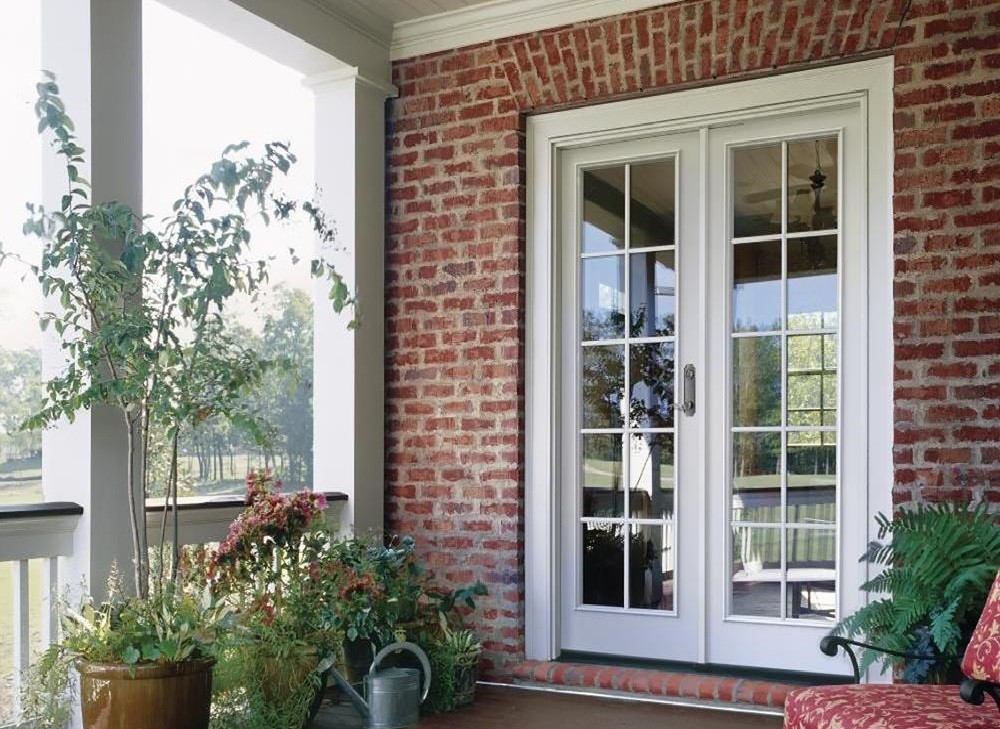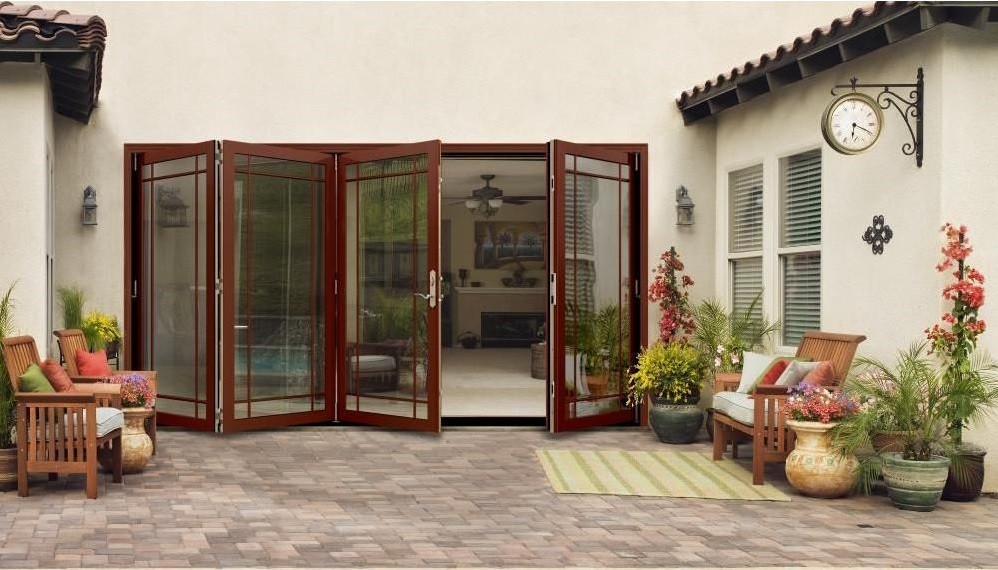From fresh and modern to rustic and woodsy, patio doors have the ability to subtly transform any space. Below are some of our favorite materials to work with and descriptions of why each of them can be especially beneficial when it comes to selecting a brand new patio door design.
1. Composite: The Go-To
An ideal material for patio doors, composite wood offers high-quality design with low-maintenance requirements. A composite patio door won’t rust, dent, split or warp, and it’s perfect for nearly every climate, including those with high humidity and moisture. Composite patio doors are available in a variety of styles and silhouettes, from relaxed and rustic to tailored and traditional. The composite sliding door shown above pairs perfectly with tempered, high-performance insulating glass and weather stripping for energy efficiency.
2. Fiberglass: Maintenance Free
Similar to composite material, fiberglass patio doors are basically maintenance-free. They are perfect for homes with children and pets, as fingerprints and wet nose smudges are easy to clean off of the fiberglass surface. If you’re going for the look of wood but want to spare yourself a few pennies, fiberglass is a great option. Its twists, knots and warps mimic that of wood’s natural look at a much lower price point. This classic fiberglass style offers a low-maintenance, relaxed style perfect for the active family or the older adult couple.
3. Aluminum: Lightweight and Versatile
Another alternative to wood, aluminum offers a lightweight option to homeowners looking to keep costs down. Aluminum is corrosion-resistant and performs well in most climates. These patio doors often come with enclosed blinds—a set of blinds hugged between two thin insets of glass—to help control light and heat within the home. This is a great feature for families with small children or curious pets as the cord to the blinds is contained within the door or up high where it is out of the reach of tiny hands.
4. Steel: Safe and Secure
Steel, the economic option, is a great material for patio doors. It offers strength and durability while simultaneously adding style to your space. A good choice for most climates, steel patio doors are super resistant to rust and corrosion. They only require a minimal amount of upkeep and are often paired with other elements like polyurethane insulation to ensure maximum energy efficiency.
5. Vinyl: The Sturdy Option
Vinyl is a strong, plastic material used for its durability and cost efficiency. Over the years, vinyl has picked up some serious steam in design, lending its strength to both interior and exterior spaces. While a synthetic material like vinyl may not seem sturdy at first, it has proven itself to have an uncanny ability to stand up to most environmental elements and works remarkably well in nearly all climates.
6. Wood: The Cult Classic
Last but certainly not least, wooden patio doors come in a range of colors, textures and strengths. Depending on where the wood was harvested and which type of tree it is from, patio doors can range from a warm honey tone to cool oak color and are typically made of pine, fir, mahogany or alder. Oftentimes, wood patio doors are painted over or have a stain applied for a worn or polished effect. Very sturdy and strong, wood offers a different shape and silhouette to patio doors that differ greatly from synthetic materials like vinyl and composite. Finding the right patio door is all about evaluating your lifestyle and needs as well as your home’s interior and exterior style. From composite glass to sturdy steel, there are many ways to show off your home’s style with one simple element. What is your favorite patio door style? Featured photo credit: http://www.shutterstock.com via shutterstock.com





